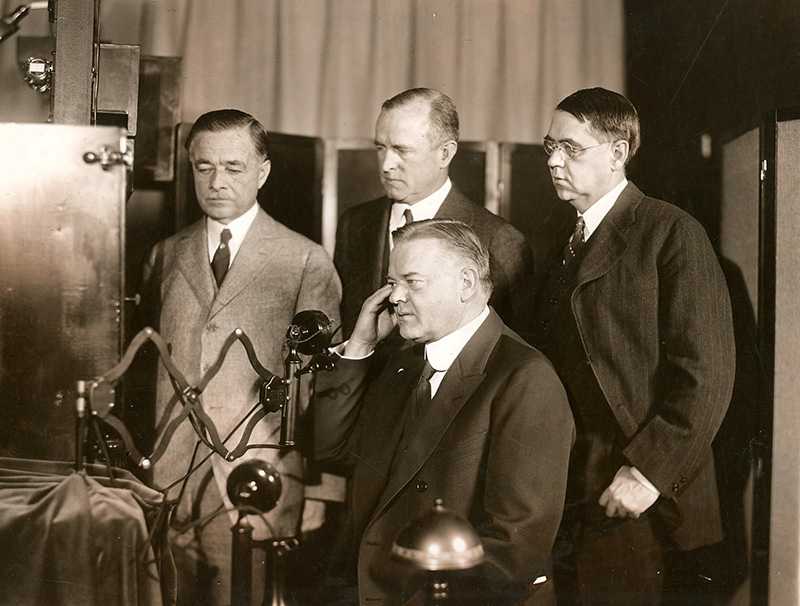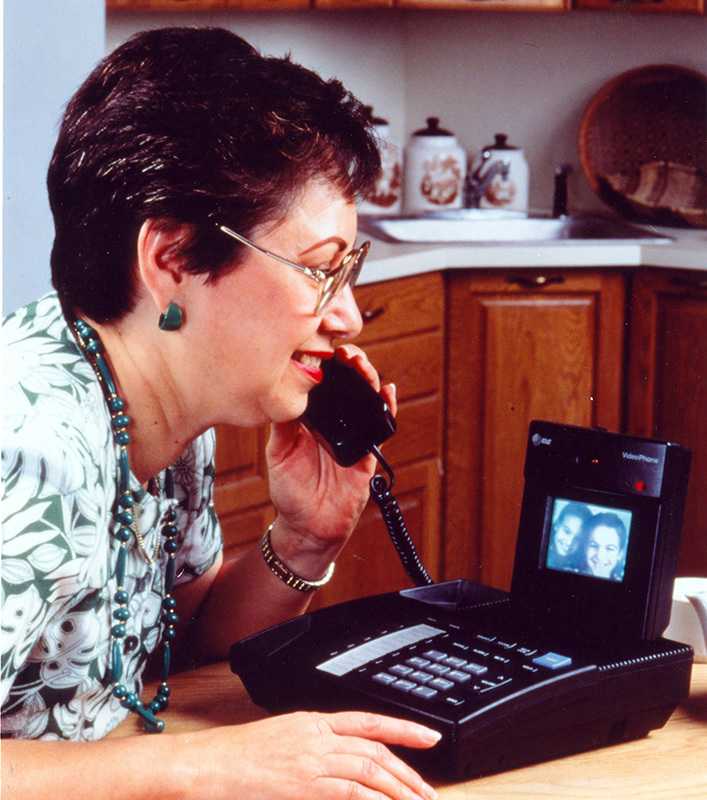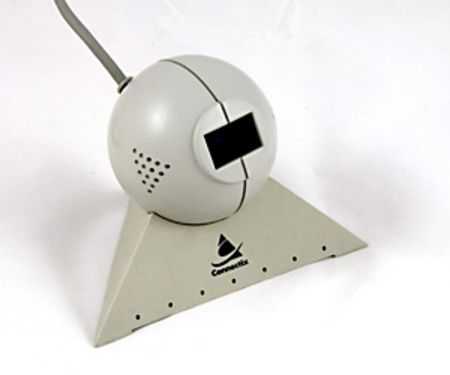The WebRTC Story - Part I
Table Of Contents

The WebRTC technology started to emerge in 2010. But WebRTC is the result of a long journey that began more than 100 years before.
I found some time to dig into the Web to try to understand how the WebRTC technology emerged.
This is my personal view of the story. I have selected people, companies, events and facts to put on that WebRTC Wall of Fame.
I may have missed or misinterpreted some elements. Please feel free to add your comments.
Here is the first part of that story that focus on the period before 2010.
1849-1920 - A complex technical challenge
The land is vast and the existing transportation did not allow to bring people together easily. The hope that communication would fill this gap grew at the end of the 19th century. But everything is to be done…
| Date | Event |
|---|---|
| 1849 | Antonio Meucci is credited with inventing the first basic phone |
| 1876 | Alexander Graham Bell invented the telephone |
| 1878 | Thomas Edison envisioned a prescient device called the telephonoscope. It would convey images as well as sound, so that faraway relatives could communicate with their kin. |
| 1880 | The Photophone (a telecommunications device that allows transmission of speech on a beam of light) invented by Bell and his assistant transmitted a wireless voice telephone message over a distance of 213m |
| 1885 | Alexander Graham Bell co-founded the American Telephone and Telegraph Company (AT&T) |
| 1915 | Bell made the first transcontinental telephone call between New York and San Francisco |

1920-1990 - A promising technology
The period 1920-1990 was the period where dreams became reality with the apparition of the first “devices” able to transmit audio and video.
| Date | Event |
|---|---|
| 1920 | Bell Telephone Laboratories began work on creating a “picture-phone” device. |
| 1927 | Ikonophone from AT&T was able to transmit from Washington to New-York a video stream (18 frames per seconds, one way) with audio (2 ways) |
| 1929 | Ikonophone upgraded to support full color |
| 1930 | Ikonophone supported the two-way calls |
| 1935 | The word “video” is coined |
| 1936 | The first publicly operated, two-way picture-phone service in the world began in 1936 and was operated by the German Reichspost (post office). People in Berlin could get in some face time with others in cities like Leipzig until the service was shuttered due to World War II. |
| 1956 | AT&T had a new Picturephone (prototype) test system ready in 1956. But it was still a rudimentary device that could only transmit an image once every two seconds in black and white. |
| 1964 | The AT&T Picturephone (Mod 1) was displayed at that year’s World’s Fair in Queens, New York. It even hosted the first transcontinental video call from the Bell Systems Pavilion to Disneyland in Anaheim, California |
| 1965 | Ericsson, the Sweden-based electronics and communications maker, was so inspired by the technology being developed at AT&T that it began to invest in its own line of videophone products |
| 1967 | First known us of “video conferencing |
| 1968 | PicturePhone locations have been stopped (only 71 calls made in 6 months |
| 1969 | CompuServe has been founded |
| 1970 | AT&T introduced PicturePhone Mod II for home and offices |
| 1973 | Network Voice Protocol (NVP) was implemented by Danny Cohen (ISI) |
| 1973 | PicturePhone Mod II discontinued |
| 1978 | First patent awarded to Compression Labs around rate control (video encoder) |
| 1980 | CompuServe releases the first chat service CB Simulator |
| 1981 | Packet Video Protocol (PVP) has been defined |
| 1981 | First paper describing an hybrid codec that became the basis for practically all commercially relevant video codecs that have been designed to this day |
| 1982 | Compression Labs launched CLI T1 a group video conferencing system |
| 1984 | Creation of PictureTel |
| 1984 | PictureTel developed the C-2000 video encoder and decoder for ISDN channels. First design around point-to-point connections. |
| 1988 | Mitsubishi created a picture phone that was able to send images during calls |
| 1988 | In November, ITU-T approved the G.722 wideband audio codec |
| 1989 | Brian C. Wiles created RASCAL, the first system to send voice over Ethernet networks |

1990-1996 - The emerging Web platform
From 1990 to 1996, 3 keys pillars (building blocks) for WebRTC were built: The webcam, the Internet and the browser.
| Date | Event |
|---|---|
| Tim Berners-Lee developed the first server and web browser for the NeXT Computer in the CERN | |
| May, 1991 | The first webcam is developed. It was used on a local network to monitor the coffee machine in the Cambridge University (129x129 pixels, grayscale picture, one frame per second). |
| Jul, 1991 | First release of NetPhone from AutoDesk |
| Apr, 1992 | First release of Erwise, the first web browser for the NeXt |
| Jun, 1992 | First release of CU-SeeMe (video only in the first release) available on Macintosh (2 years later on Windows). Cu-SeeMe will by acquired by RadVision in 2005 and then by Avaya (2012). Cu-SeeMe was the first “video-chat” |
| Sep, 1992 | AT&T unveiled the VideoPhone 2500, the world’s first colour videophone that could transmit over analog telephone lines |
| Jan, 1993 | First version of Mosaic developed by the NCSA |
| Jun, 1993 | First release of Cello, the web browser from Microsoft |
| Jan, 1994 | First real paper on multipoint control units for videoconferencing. This design was referred to a transcoding Multipoint Control Unit or MCU. Due to the high processing needed on server side for decoding, scaling and re-encoding streams, first servers cost more than 50,000$ and are limited to 32 participants |
| Connectix Corporation sells the first commercial webcam for the Apple Macintosh connected via a serial port (320x240) | |
| Sep, 1994 | Berners-Lee founded the World Wide Web Consortium (W3C) at the Massachusetts Institute of Technology |
| Nov, 1994 | First release of the Netscape web browser |
| Aug, 1995 | Microsoft releases the first version of Internet Explorer. |
| Sep, 1995 | Creation of the company Opera Software to focus on the development of the Opera browser |
| Sep, 1995 | First release of Free World Dialup, the first paid solution for VoIP calls |
| Oct, 1995 | Connectix Corporation releases the same webcam for Microsoft Windows. |
| Dec, 1995 | Netscape and Sun Microsystems unveiled JavaScript |
| Jan, 1996 | Henning Schulzrinne (University of Columbia) published the first specification of the RTP: Real-Time Protocol (RFC 1889 → RFC 3550). This describes how to take bits coming from an audio or video encoder and put them into packets so that they can be transported over IP networks. |
| Feb, 1996 | First public release of the Opera browser for Windows 1995 |
| Mar, 1996 | Netscape added the support of JavaScript in Netscape Navigator 2.0 |
| Apr, 1996 | Panasonic prototyped the first wordless videophone (7 frames per seconds) |
| Microsoft releases the first version of NetMeeting for Windows 95 OSR2 using the H323 (G723 for video and G711 for audio) codec | |
| Aug, 1996 | Microsoft added the support of JScript in Internet Explorer 3.0 |
| Sep, 1996 | Foundation of Lucent Technologies (from AT&T Technologies composed by Western Electric and the Bell Labs) |
| Nov, 1996 | First draft of H.323 published by the ITU |
| Dec, 1996 | Macromedia bought FutureSplash Animator (vector animation tool) and released the first version of Flash 1.0 |

1997-2009 - Newcomers companies
Starting 1997, the “Telco” vendors starting to see newcomers able to create social platforms with a new way to communicate around the world in real-time.
Do we still really need a phone to call someone ?
| Date | Event |
|---|---|
| Jun, 1997 | Flash 2.0 with the support of stereo sound and bitmap integration |
| Nov, 1997 | AOL acquired CompuServe |
| Nov, 1997 | AOL Instant Messenger launched |
| Mar, 1998 | Yahoo Messenger launched |
| Sep, 1998 | Foundation of Google Inc |
| Mar, 1999 | Internet Explorer 5.0 introduces the first implementation of the interface XMLHttpRequest and add the support of Flash 4 (with support of MP3) |
| May, 1999 | First public release of SIP (v2.0) |
| In 1999, Kyocera released what it claimed was the first mobile videophone — indeed, the inclusion of a camera alone was a feat for the time. It was called the VisualPhone VP-210 and included a built-in, front-facing camera that could transmit and receive video at the rate of about two frames per second. | |
| xxx, 1999 | First release of Asterisk, the first IP-PBX developed by Mark Spencer |
| Jun, 1999 | First work on the Jabber protocol |
| Jul, 1999 | MSN Messenger launched |
| Feb, 2001 | First version of VideoLan with a server to stream audio and video to a desktop application available for Mac, Linux, Windows and Box |
| May, 2001 | PictureTel was acquired by Polycom |
| Aug, 2001 | Microsoft introduced Internet Explorer 6 for Windows XP |
| Feb, 2002 | First release of Firefox 1.0 developed by the Mozilla Foundation and based on Gecko |
| Aug, 2002 | Apple introduces iChat in Mac OSX 10.2, compliant with ICQ |
| Jan, 2003 | Creation of Lifesize |
| Jan, 2003 | First version of Safari, the official Web browser for the Macintosh based on Apple’s internal fork of the KHTML rendering engine, called WebKit. |
| Jun, 2003 | With Mac OS 10.3, Apple iChat becomes iChat AV with the possibility to have audio and video calls (SIP) |
| Jul, 2003 | Creation of the Mozilla Foundation |
| xxx, 2003 | First version of Jitsi developed by Emil Ivov during his years of study in Strasbourg (France) |
| First public beta version of Skype | |
| Jan, 2004 | VoIP declared as an information service, not a phone service. (states could not regulate VoIP services. |
| Feb, 2004 | Creation of The Facebook |
| Feb, 2004 | Radvision (with Ofer Shapiro) developed the first Ip video conferencing bridge and programmable gatekeeper |
| Sep, 2004 | Final specification published for the iLBC (Internet Low Bitrate Codec) a royalty-free narrow band speech audio coding format developed by Global IP Solution (GIPS) |
| Nov, 2004 | First official version of Firefox 1.0 |
| Mar, 2005 | Ofer Shapiro left Radvision and found Vidyo with the goal of introducing a new architecture for doing multipoint video by solving the error resilience and the server complexity problems. This new architecture was based on two innovations: use of scalable video coding and use of what we called selective forwarding server |
| May, 2005 | Enhanced 911 Services now mandatory for VoIP Providers |
| May, 2005 | SCN Ltd. launched the beta version of TruPhone, the first VoIP mobile application on the Nokia 60 |
| Aug, 2005 | Google Talk launched |
| Sep, 2005 | eBay acquires Skype for US\$2.5 billion in up-front cash and eBay stock |
| Dec, 2005 | Adobe Systems acquires Macromedia and all of its products |
| Jan, 2006 | First public announcement of FreeSWITCH at O’Reilly Media’s ETEL Conference by Anthony Minessale |
| Apr, 2006 | The World Wide Web Consortium published a Working Draft specification for the XMLHttpRequest object |
| Apple introduces the first MacBook with a camera | |
| Oct, 2006 | Justin Uberti AIM (AOL) hired by Google (for working on Google Talk). |
| Dec, 2006 | Alcatel SA and Lucent Technologies merged into Alcatel-Lucent |
| Jan, 2007 | Apple unveiled first Iphone |
| Apr, 2007 | Serge Lachapelle hired by Google |
| Jan, 2008 | Vidyo launched VidyoConferencing, its first SFU based product |
| Apr, 2008 | Facebook® Chat is released |
| May, 2008 | FreeSWITCH v1.0.0 is released |
| Jun, 2009 | First downloadable version of BigBlueButton (v0.4) |
| Sep, 2008 | Jabber XCP acquired by Cisco |
| Sep, 2008 | First release of VP8 by On2 |
| Sep, 2008 | First version of Chrome by Google |
| Nov, 2008 | Serge Lachapelle’s team (included Justin Uberti) added voice and video chat in Gmail using XMPP, H264/SVC |
| Jan, 2009 | WhatsApp is released, allowing users to send texts, pictures, video, and audio for free aka no more paying for SMS |
| May, 2009 | Google announced Google Wave, it’s new collaborative platform |
| Sep, 2009 | Chrome 3 adds the support of the Audio and Video elements |
| Oct, 2009 | First idea of WebRTC one year after the launch of Chrome by the Chrome team to look for a real time communication solution without a server and without a plugin |

2010 - WebRTC to come
And here we are, in 2010 where the WebRTC journey really started…
All the pieces of the puzzle were in place to move from the idea of real-time browser communication without a plugin to a real implementation…
The second part is available here: The WebRTC Story Part II.
Some sources used
- Look who’s talking the birth of the video phone
- History of video conferencing
- History of VoIP and Internet Telephones

